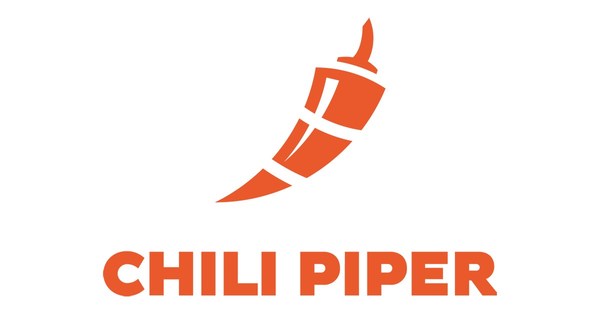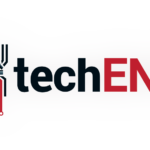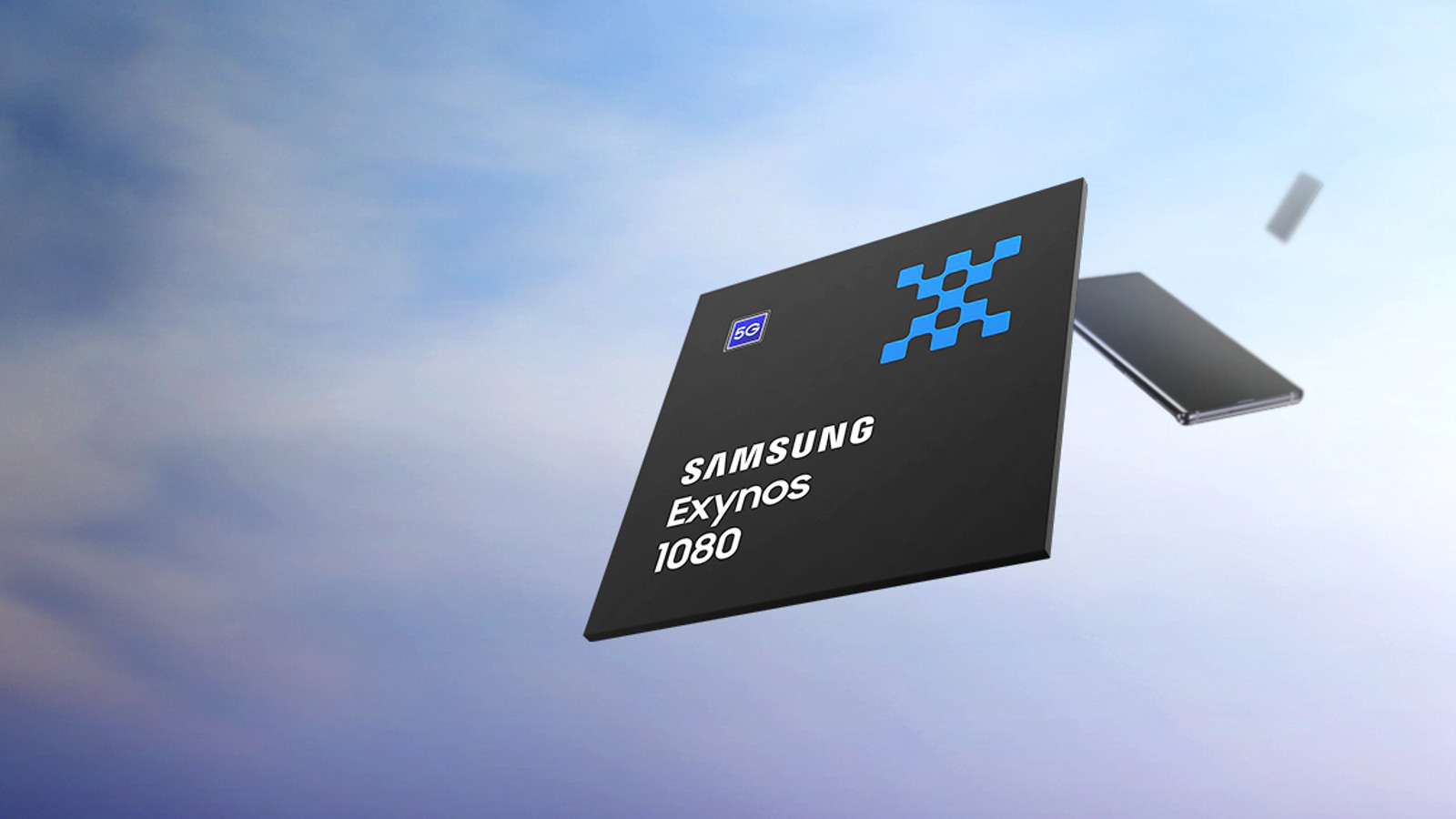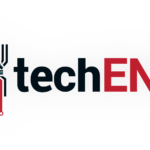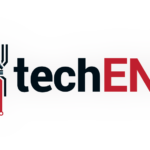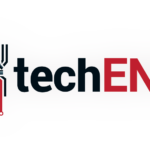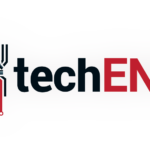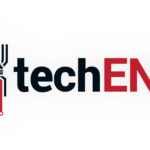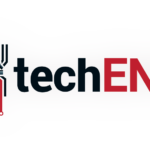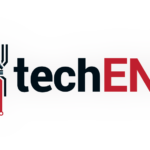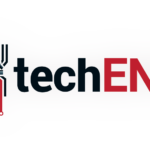Live Conference Call to be Held at 8:00 PM U.S. Eastern Time on November 17, 2020
BEIJING, Nov. 18, 2020 — Phoenix New Media Limited (NYSE: FENG) ("Phoenix New Media", "ifeng" or the "Company"), a leading new media company in China, today announced its unaudited financial results for the third quarter ended September 30, 2020.
Mr. Shuang Liu, CEO of Phoenix New Media, commented, "We remained steadfast in our commitment to providing a superior user experience, fortifying our content leadership, and augmenting our monetization capabilities in the third quarter of 2020. To further improve iFeng’s user engagement and user retention levels, we refined the platform’s content recommendation engine while also enhancing its user experience in turn. At the same time, we maintained our focus on boosting our leadership in those content verticals which we believe to have long-term strategic value. On the innovation front, we maintained focus on the cultivation of our existing business initiatives while also carefully exploring a number of other potential business opportunities. Looking ahead, we are convinced that our professional technical expertise, content leadership, and brand influence will continue to place us at the tip of the new media spear, allowing us to capture those segments of the market with promising growth potential as the world rebounds from the COVID-19 pandemic."
Mr. Edward Lu, CFO of Phoenix New Media, further stated, "In the face of macroeconomic uncertainties, the COVID-19 pandemic, and escalating geopolitical tensions, we maintained our laser-sharp focus on the refinement of our cost structures during the third quarter of 2020. In light of the current situation, we expect the new media industry in China to continue facing pressure throughout the remainder of the year. Nevertheless, despite these short-term setbacks, we believe that our steady progress on multiple fronts will provide us with additional opportunities to augment our business fundamentals, enhance our growth quality, and ultimately generate long-term return to our shareholders."
Third quarter 2020 Financial Results
As disclosed in the second quarter 2020 unaudited financial results announcement made on August 17, 2020, the Company sold all of its investment in Beijing Yitian Xindong Network Technology Co., Ltd. ("Yitian Xindong" or "Tadu") in the second quarter of 2020 and the disposal of Tadu was qualified for reporting as a "discontinued operation" in the Company’s financial statements. Accordingly, Tadu’s results of operations have been excluded from the Company’s results from continuing operations in the condensed consolidated statements of comprehensive income/(loss) and are presented in separate line items as discontinued operations for all prior periods. The related assets and liabilities associated with the discontinued operations in the prior year consolidated balance sheets were classified as assets/liabilities held for sale to provide the comparable financial information, and the financial information and non-GAAP financial information disclosed in this press release is presented on a continuing operations basis, unless otherwise specifically stated.
REVENUES
Total revenues in the third quarter of 2020 decreased by 10.9% to RMB303.0 million (US$44.6 million) from RMB339.9 million in the same period of 2019, which was primarily due to the negative impact of the COVID-19 outbreak and heightened industry competitions.
Net advertising revenues in the third quarter of 2020 decreased by 10.2% to RMB281.3 million (US$41.4 million) from RMB313.1 million in the same period of 2019. The decrease was primarily attributable to the negative impact of the COVID-19 outbreak and heightened industry competitions.
Paid services revenues[1] in the third quarter of 2020 decreased by 19.0% to RMB21.7 million (US$3.2 million) from RMB26.8 million in the same period of 2019. Revenues from paid contents in the third quarter of 2020 decreased by 34.3% to RMB8.9 million (US$1.3 million) from RMB13.5 million in the same period of 2019, which was mainly due to the tightening of rules and regulations on digital reading in China and in line with the broader market conditions. Revenues from MVAS and games were small and had been declining for the past years. Revenues from others in the third quarter of 2020 were RMB9.4 million (US$1.4 million), which remained almost unchanged from the same period of 2019.
|
[1] Paid services revenues comprise of (i) revenues from paid contents excluding those from Tadu, which includes digital reading, audio books, paid videos, and other content-related sales activities, (ii) revenues from games, which includes web-based games and mobile games, (iii) revenues from MVAS, and (iv) revenues from others. |
COST OF REVENUES
Cost of revenues in the third quarter of 2020 decreased by 12.3% to RMB150.0 million (US$22.1 million) from RMB171.1 million in the same period of 2019. The decrease in cost of revenues was mainly due to the following:
- Content and operational costs in the third quarter of 2020 decreased by 13.4% to RMB129.7 million (US$19.1 million) from RMB149.9 million in the same period of 2019, mainly due to the Company’s strict cost control measures taken to enhance its operating efficiency in 2020. Share-based compensation included in the content and operational costs in the third quarter of 2020 decreased to RMB0.4 million (US$0.1 million) from RMB1.5 million in the same period of 2019.
- Revenue sharing fees to telecom operators and channel partners in the third quarter of 2020 decreased by 17.7% to RMB6.0 million (US$0.9 million) from RMB7.3 million in the same period of 2019, primarily attributable to the decrease in revenue sharing fees paid to content providers.
The decrease was partially offset by the following:
- Bandwidth costs in the third quarter of 2020 increased slightly to RMB14.3 million (US$2.1 million) from RMB13.9 million in the same period of 2019.
GROSS PROFIT
Gross profit in the third quarter of 2020 decreased by 9.4% to RMB153.0 million (US$22.5 million) from RMB168.8 million in the same period of 2019. Gross margin in the third quarter of 2020 increased to 50.5% from 49.7% in the same period of 2019, primarily attributable to the Company’s strict cost control measures taken to enhance its operating efficiency in 2020, as explained above.
To supplement the financial measures presented in accordance with the United States Generally Accepted Accounting Principles ("GAAP"), the Company has presented certain non-GAAP financial measures in this press release, which excluded the impact of certain reconciling items as stated in the "Use of Non-GAAP Financial Measures" section below. The related reconciliations to GAAP financial measures are presented in the accompanying "Reconciliations of Non-GAAP Results of Operation Measures to the Nearest Comparable GAAP Measures."
Non-GAAP gross margin in the third quarter of 2020, which excluded share-based compensation, increased to 50.6% from 50.1% in the same period of 2019.
OPERATING EXPENSES AND INCOME OR LOSS FROM OPERATIONS
Total operating expenses in the third quarter of 2020 decreased by 20.8% to RMB181.4 million (US$26.7 million) from RMB229.0 million in the same period of 2019, primarily attributable to the decreases in both the Company’s traffic acquisition expenses and the personnel-related expenses as a result of the strict cost control measures taken by the Company to enhance its operating efficiency in 2020, which was partially offset by the increase in bad debt expenses caused by the slower collection of receivables as a result of the COVID-19 outbreak. Share-based compensation included in operating expenses in the third quarter of 2020 was RMB1.3 million (US$0.2 million), compared to RMB1.9 million in the same period of 2019.
Loss from operations in the third quarter of 2020 was RMB28.4 million (US$4.2 million), compared to loss from operations of RMB60.2 million in the same period of 2019. Operating margin in the third quarter of 2020 was negative 9.4%, compared to negative 17.7% in the same period of 2019.
Non-GAAP loss from operations in the third quarter of 2020, which excluded share-based compensation, was RMB26.7 million (US$3.9 million), compared to non-GAAP loss from operations of RMB56.8 million in the same period of 2019. Non-GAAP operating margin in the third quarter of 2020, which excluded share-based compensation, was negative 8.8%, compared to negative 16.7% in the same period of 2019.
OTHER INCOME OR LOSS
Other income or loss reflects net interest income, foreign currency exchange gain or loss, income or loss from equity method investments, net of impairment, impairment of available-for-sale debt investments, changes in fair value of loan related to co-sale of Particle shares, and others, net[2]. Total net other income in the third quarter of 2020 was RMB30.9 million (US$4.6 million), compared to total net other income of RMB19.2 million in the same period of 2019. The increase in total net other income was mainly due to the following:
- Net interest income in the third quarter of 2020 increased to RMB14.8 million (US$2.2 million) from RMB7.7 million in the same period of 2019, mainly caused by more investments in term deposits and short term investments in the third quarter of 2020, as the Company received the remaining payment of approximately US$99.3 million from Run Liang Tai on August 10, 2020, as mentioned in the section headed "CERTAIN BALANCE SHEET ITEMS" below.
- Foreign currency exchange gain in the third quarter of 2020 was RMB3.2 million (US$0.5 million), compared to RMB6.1 million in the same period of 2019.
- Income from equity method investments, net of impairment in the third quarter of 2020 was RMB6.0 million (US$0.9 million), which reflected the gain from disposal of the equity investment in certain investee incurred in the third quarter of 2020.
- Impairment of available-for-sale debt investment in the third quarter of 2020 was RMB2.0 million (US$0.3 million), which reflected the amount of the impairment related to credit losses on the available-for-sale debt investment in certain investee incurred in the third quarter of 2020.
- Changes in fair value of loan related to co-sale of Particle shares in the third quarter of 2020 were a loss of RMB4.5 million (US$0.7 million), mainly caused by the decline in the fair value of an interest-free loan with the principal of approximately US$9.7 million granted by the Company to Run Liang Tai. Run Liang Tai pledged 4,584,209 series D1 preferred shares of Particle to the Company to secure the repayment of the loan and transferred the pledged shares back to the Company in satisfaction of its obligation to repay the US$9.7 million loan in August 2020. In view of the nature of the loan which was collateralized by the above mentioned pledged shares, the Company elected to account for the loan under the fair value option.
- Others, net, in the third quarter of 2020 increased to RMB13.4 million (US$2.0 million), from RMB5.4 million in the same period of 2019, mainly caused by more government subsidies received in the third quarter of 2020.
|
[2] "Others, net" primarily consists of government subsidies and litigation loss provisions. |
NET INCOME OR LOSS FROM CONTINUING OPERATIONS ATTRIBUTABLE TO PHOENIX NEW MEDIA LIMITED
Net loss from continuing operations attributable to Phoenix New Media Limited in the third quarter of 2020 was RMB0.9 million (US$0.1 million), compared to net loss from continuing operations attributable to Phoenix New Media Limited of RMB50.9 million in the same period of 2019. Net margin from continuing operations in the third quarter of 2020 was negative 0.3%, compared to negative 15.0% in the same period of 2019. Net loss from continuing operations per diluted ADS[3] in the third quarter of 2020 was RMB0.01 (US$0.00), compared to net loss from continuing operations per diluted ADS of RMB0.70 in the same period of 2019.
Non-GAAP net income from continuing operations attributable to Phoenix New Media Limited, which excluded share-based compensation, income or loss from equity method investments, net of impairment, impairment of available-for-sale debt investments, changes in fair value of loan related to co-sale of Particle shares and changes in fair value of forward contract in relation to future disposal of investments in Particle, was RMB1.3 million (US$0.2 million) in the third quarter of 2020, compared to non-GAAP net loss from continuing operations attributable to Phoenix New Media Limited of RMB47.5 million in the same period of 2019. Non-GAAP net margin from continuing operations in the third quarter of 2020 was positive 0.4%, compared to negative 14.0% in the same period of 2019. Non-GAAP net income from continuing operations per basic and diluted ADS in the third quarter of 2020 was RMB0.02 (US$0.00), compared to non-GAAP net loss from continuing operations per basic and diluted ADS of RMB0.65 in the same period of 2019.
In the third quarter of 2020, the Company’s weighted average number of ADSs used in the computation of diluted net income from continuing operations per basic and diluted ADS was 72,790,541. As of September 30, 2020, the Company had a total of 582,324,325 ordinary shares outstanding, or the equivalent of 72,790,541 ADSs.
|
[3] "ADS" means American Depositary Share of the Company. Each ADS represents eight Class A ordinary shares of the Company. |
CERTAIN BALANCE SHEET ITEMS
As of September 30, 2020, the Company’s cash and cash equivalents, term deposits and short term investments and restricted cash were RMB2.37 billion (US$349.5 million).
As previously announced by the Company, the Company entered into a share purchase agreement (the "SPA") with Run Liang Tai Management Limited, or Run Liang Tai, and its designated entities (the "Proposed Buyers") on March 22, 2019 and entered into a series of agreements with Run Liang Tai and the other shareholders of Particle to resolve certain issues in connection with the sale of preferred shares in Particle Inc. ("Particle") ("Previous Agreements"). The Company completed delivery of the first batch of preferred shares of Particle to the Proposed Buyers in the fourth quarter of 2019, and the Proposed Buyers were required to pay the remaining purchase price for the second batch of Particle shares to the Company on or before August 10, 2020. In August 2020, the Company announced that it had signed a new share purchase agreement (the "New SPA") with Run Liang Tai, which replaced the Company’s Previous Agreements with Run Liang Tai. Under the New SPA, the rights and obligations of both the Proposed Buyers and the Company with respect to the second batch of shares under the Previous Agreements were terminated, and instead, the Company agreed to sell a total of 140,248,775 shares of Particle to the Proposed Buyers at a total purchase price of US$150 million and a per share purchase price of US$1.0695 (the "Transaction"). On August 10, 2020, the Proposed Buyers paid approximately US$99.3 million (the "Remaining Payment") to the Company under the New SPA, which represents the difference between the total purchase price and the US$50 million deposit already paid by the Proposed Buyers to the Company under the Previous Agreements plus certain other accrued interests. As of today, the closing conditions for the New SPA have been satisfied. The shareholders of the Company’s parent company, Phoenix Media Investment (Holdings) Limited ("Phoenix TV"), approved the New SPA on October 14, 2020. The Transaction was closed on October 19, 2020.
The fair value of the Company’s available-for-sale debt investments in Particle was increased from RMB1,057.8 million as of June 30, 2020 to RMB1,061.3 million (US$156.3 million) as of September 30, 2020. The available-for-sale debt investments as of September 30, 2020 included both the 140,248,775 shares of Particle to be delivered on October 19, 2020 and the 4,584,209 series D1 preferred shares of Particle transferred to the Company by Run Liang Tai in August 2020, which were previously pledged to the Company to secure the repayment of an interest-free loan with the principal of approximately US$9.7 million granted by the Company to Run Liang Tai. All the changes in fair value of available-for-sale debt investments in Particle recorded in the accumulated other comprehensive income or loss in shareholders’ equity related to the 140,248,775 shares of Particle delivered on October 19, 2020 are expected to be reclassified into gain on disposal of available-for-sale debt investments in the Company’s consolidated statements of comprehensive income/(loss) in the fourth quarter of 2020. The fair value of the investments in Particle as of September 30, 2020 was determined based on a valuation technique under the market approach, known as the guideline company method, as well as using observable transactions of Particle’s shares, as the selling price of the Transaction.
Business Outlook
For the fourth quarter of 2020, the Company expects its total revenues to be between RMB332.4 million and RMB362.4 million; net advertising revenues are expected to be between RMB309.6 million and RMB334.6 million; and paid services revenues are expected to be between RMB22.8 million and RMB27.8 million.
All of the above forecasts reflect the current and preliminary views of Company management, which are subject to change and substantial uncertainty, particularly in view of the potential impact of the COVID-19 outbreak, the effects of which are difficult to analyse and predict.
Conference Call Information
The Company will hold a conference call at 8:00 p.m. U.S. Eastern Time on November 17, 2020 (November 18, 2020 at 9:00 a.m. Beijing/Hong Kong time) to discuss its third quarter 2020 unaudited financial results and operating performance.
To participate in the call, please register in advance of the conference by navigating to http://apac.directeventreg.com/registration/event/4731548 . Upon registering, you will be provided with participant dial-in numbers, Direct Event passcode and unique registrant ID by email. Please dial in 10 minutes prior to the call, using the participant dial-in numbers, Direct Event Passcode and unique registrant ID which would be provided upon registering. You will be automatically linked to the live call after completion of this process.
A replay of the call will be available through November 25, 2020 by using the dial-in numbers and conference ID below:
|
International: |
+61 2 8199 0299 |
|
|
Mainland China: |
4006322162 |
|
|
Hong Kong: |
+852 30512780 |
|
|
United States: |
+1 646 254 3697 |
|
|
Conference ID: |
4731548 |
A live and archived webcast of the conference call will also be available at the Company’s investor relations website at http://ir.ifeng.com.
Use of Non-GAAP Financial Measures
To supplement the consolidated financial statements presented in accordance with the United States Generally Accepted Accounting Principles ("GAAP"), Phoenix New Media Limited uses non-GAAP gross profit, non-GAAP gross margin, non-GAAP income or loss from operations, non-GAAP operating margin, non-GAAP net income or loss from continuing operations attributable to Phoenix New Media Limited, non-GAAP net margin from continuing operations and non-GAAP net income or loss from continuing operations per diluted ADS, each of which is a non-GAAP financial measure. Non-GAAP gross profit is gross profit excluding share-based compensation. Non-GAAP gross margin is non-GAAP gross profit divided by total revenues. Non-GAAP income or loss from operations is income or loss from operations excluding share-based compensation. Non-GAAP operating margin is non-GAAP income or loss from operations divided by total revenues. Non-GAAP net income or loss from continuing operations attributable to Phoenix New Media Limited is net income or loss from continuing operations attributable to Phoenix New Media Limited excluding share-based compensation, income or loss from equity method investments, net of impairment, impairment of available-for-sale debt investments, changes in fair value of loan related to co-sale of Particle shares, and changes in fair value of forward contract in relation to future disposal of investments in Particle. Non-GAAP net margin from continuing operations is non-GAAP net income or loss from continuing operations attributable to Phoenix New Media Limited divided by total revenues. Non-GAAP net income or loss from continuing operations per diluted ADS is non-GAAP net income or loss from continuing operations attributable to Phoenix New Media Limited divided by weighted average number of diluted ADSs. The Company believes that separate analysis and exclusion of the aforementioned non-GAAP to GAAP reconciling items add clarity to the constituent parts of its performance. The Company reviews these non-GAAP financial measures together with the related GAAP financial measures to obtain a better understanding of its operating performance. It uses these non-GAAP financial measures for planning, forecasting and measuring results against the forecast. The Company believes that using these non-GAAP financial measures to evaluate its business allows both management and investors to assess the Company’s performance against its competitors and ultimately monitor its capacity to generate returns for investors. The Company also believes that these non-GAAP financial measures are useful supplemental information for investors and analysts to assess its operating performance without the effect of items like share-based compensation, income or loss from equity method investments, net of impairment, which have been and will continue to be significant recurring items, and without the effect of impairment of available-for-sale debt investments, changes in fair value of loan related to co-sale of Particle shares and changes in fair value of forward contract in relation to future disposal of investments in Particle which have been significant and one-time items. However, the use of these non-GAAP financial measures has material limitations as an analytical tool. One of the limitations of using these non-GAAP financial measures is that they do not include all items that impact the Company’s gross profit, income or loss from operations and net income or loss from continuing operations attributable to Phoenix New Media Limited for the period. In addition, because these non-GAAP financial measures are not calculated in the same manner by all companies, they may not be comparable to other similarly titled measures used by other companies. In light of the foregoing limitations, you should not consider these non-GAAP financial measures in isolation from, or as an alternative to, the financial measures prepared in accordance with GAAP.
Exchange Rate
This announcement contains translations of certain RMB amounts into U.S. dollars ("USD") at specified rates solely for the convenience of the reader. Unless otherwise stated, all translations from RMB to USD were made at the rate of RMB6.7896 to US$1.00, the noon buying rate in effect on September 30, 2020 in the H.10 statistical release of the Federal Reserve Board. The Company makes no representation that the RMB or USD amounts referred could be converted into USD or RMB, as the case may be, at any particular rate or at all. For analytical presentation, all percentages are calculated using the numbers presented in the financial statements contained in this earnings release.
About Phoenix New Media Limited
Phoenix New Media Limited (NYSE: FENG) is a leading new media company providing premium content on an integrated Internet platform, including PC and mobile, in China. Having originated from a leading global Chinese language TV network based in Hong Kong, Phoenix TV, the Company enables consumers to access professional news and other quality information and share user-generated content on the Internet through their PCs and mobile devices. Phoenix New Media’s platform includes its PC channel, consisting of ifeng.com website, which comprises interest-based verticals and interactive services; its mobile channel, consisting of mobile news applications, mobile video application and mobile Internet website; and its operations with the telecom operators that provides mobile value-added services.
Safe Harbor Statement
This announcement contains forward−looking statements. These statements are made under the "safe harbor" provisions of the U.S. Private Securities Litigation Reform Act of 1995. These forward−looking statements can be identified by terminology such as "will," "expects," "anticipates," "future," "intends," "plans," "believes," "estimates" and similar statements. Among other things, the business outlook and quotations from management in this announcement, as well as Phoenix New Media’s strategic and operational plans, contain forward−looking statements. Phoenix New Media may also make written or oral forward−looking statements in its periodic reports to the U.S. Securities and Exchange Commission ("SEC") on Forms 20−F and 6−K, in its annual report to shareholders, in press releases and other written materials and in oral statements made by its officers, directors or employees to third parties. Statements that are not historical facts, including statements about Phoenix New Media’s beliefs and expectations, are forward−looking statements. Forward−looking statements involve inherent risks and uncertainties. A number of factors could cause actual results to differ materially from those contained in any forward−looking statement, including but not limited to the following: the Company’s goals and strategies; the Company’s future business development, financial condition and results of operations; the expected growth of online and mobile advertising, online video and mobile paid services markets in China; the Company’s reliance on online and mobile advertising and MVAS for a majority of its total revenues; the Company’s expectations regarding demand for and market acceptance of its services; the Company’s expectations regarding maintaining and strengthening its relationships with advertisers, partners and customers; the Company’s investment plans and strategies, fluctuations in the Company’s quarterly operating results; the Company’s plans to enhance its user experience, infrastructure and services offerings; the Company’s reliance on mobile operators in China to provide most of its MVAS; changes by mobile operators in China to their policies for MVAS; competition in its industry in China; relevant government policies and regulations relating to the Company; and the effects of the COVID-19 on the economy in China in general and on the Company’s business in particular. Further information regarding these and other risks is included in the Company’s filings with the SEC, including its registration statement on Form F−1, as amended, and its annual reports on Form 20−F. All information provided in this press release and in the attachments is as of the date of this press release, and Phoenix New Media does not undertake any obligation to update any forward−looking statement, except as required under applicable law.
For investor and media inquiries please contact:
Phoenix New Media Limited
Qing Liu
Email: investorrelations@ifeng.com
ICR, Inc.
Jack Wang
Tel: +1 (646) 405-4883
Email: investorrelations@ifeng.com
|
Phoenix New Media Limited |
||||||||||||
|
Unaudited Condensed Consolidated Balance Sheets |
||||||||||||
|
(Amounts in thousands) |
||||||||||||
|
December 31, |
September 30, |
September 30, |
||||||||||
|
2019 |
2020 |
2020 |
||||||||||
|
RMB |
RMB |
US$ |
||||||||||
|
ASSETS |
||||||||||||
|
Current assets: |
||||||||||||
|
Cash and cash equivalents |
310,876 |
109,386 |
16,111 |
|||||||||
|
Term deposits and short term investments |
1,271,889 |
2,234,406 |
329,092 |
|||||||||
|
Restricted cash |
66,234 |
29,067 |
4,281 |
|||||||||
|
Accounts receivable, net |
609,627 |
624,676 |
92,005 |
|||||||||
|
Amounts due from related parties |
56,653 |
41,617 |
6,130 |
|||||||||
|
Prepayment and other current assets |
57,391 |
48,151 |
7,092 |
|||||||||
|
Assets held for sale |
184,032 |
– |
– |
|||||||||
|
Total current assets |
2,556,702 |
3,087,303 |
454,711 |
|||||||||
|
Non-current assets: |
||||||||||||
|
Property and equipment, net |
97,357 |
71,115 |
10,474 |
|||||||||
|
Intangible assets, net |
13,633 |
21,606 |
3,182 |
|||||||||
|
Goodwill |
22,786 |
22,786 |
3,356 |
|||||||||
|
Available-for-sale debt investments |
2,014,537 |
1,067,232 |
157,186 |
|||||||||
|
Equity investments, net |
13,237 |
13,000 |
1,915 |
|||||||||
|
Deferred tax assets |
73,688 |
88,955 |
13,102 |
|||||||||
|
Operating lease right-of- use assets, net |
84,550 |
59,103 |
8,705 |
|||||||||
|
Other non-current assets |
19,859 |
19,836 |
2,921 |
|||||||||
|
Assets held for sale |
429,468 |
– |
– |
|||||||||
|
Total non-current assets |
2,769,115 |
1,363,633 |
200,841 |
|||||||||
|
Total assets |
5,325,817 |
4,450,936 |
655,552 |
|||||||||
|
LIABILITIES AND SHAREHOLDERS’ EQUITY |
||||||||||||
|
Current liabilities: |
||||||||||||
|
Accounts payable |
249,018 |
198,422 |
29,224 |
|||||||||
|
Amounts due to related parties |
34,155 |
26,535 |
3,908 |
|||||||||
|
Advances from customers |
46,172 |
38,033 |
5,602 |
|||||||||
|
Taxes payable |
287,765 |
295,564 |
43,532 |
|||||||||
|
Salary and welfare payable |
157,784 |
107,595 |
15,847 |
|||||||||
|
Deposits in relation to future disposal of investment in Particle |
355,212 |
1,021,515 |
150,453 |
|||||||||
|
Accrued expenses and other current liabilities |
274,122 |
181,694 |
26,761 |
|||||||||
|
Operating lease liabilities |
37,874 |
41,349 |
6,090 |
|||||||||
|
Liabilities held for sale |
63,341 |
– |
– |
|||||||||
|
Total current liabilities |
1,505,443 |
1,910,707 |
281,417 |
|||||||||
|
Non-current liabilities: |
||||||||||||
|
Deferred tax liabilities |
192,142 |
93,774 |
13,811 |
|||||||||
|
Long-term liabilities |
27,612 |
27,612 |
4,067 |
|||||||||
|
Operating lease liabilities |
49,929 |
24,322 |
3,582 |
|||||||||
|
Liabilities held for sale |
5,676 |
– |
– |
|||||||||
|
Total non-current liabilities |
275,359 |
145,708 |
21,460 |
|||||||||
|
Total liabilities |
1,780,802 |
2,056,415 |
302,877 |
|||||||||
|
Shareholders’ equity: |
||||||||||||
|
Phoenix New Media Limited shareholders’ equity: |
||||||||||||
|
Class A ordinary shares |
17,499 |
17,499 |
2,577 |
|||||||||
|
Class B ordinary shares |
22,053 |
22,053 |
3,248 |
|||||||||
|
Additional paid-in capital |
1,611,484 |
1,616,941 |
238,150 |
|||||||||
|
Statutory reserves |
88,583 |
88,583 |
13,047 |
|||||||||
|
Retained earnings |
186,324 |
113,966 |
16,785 |
|||||||||
|
Accumulated other comprehensive income |
1,405,808 |
507,045 |
74,680 |
|||||||||
|
Total Phoenix New Media Limited shareholders’ equity |
3,331,751 |
2,366,087 |
348,487 |
|||||||||
|
Noncontrolling interests |
213,264 |
28,434 |
4,188 |
|||||||||
|
Total shareholders’ equity |
3,545,015 |
2,394,521 |
352,675 |
|||||||||
|
Total liabilities and shareholders’ equity |
5,325,817 |
4,450,936 |
655,552 |
|||||||||
|
Phoenix New Media Limited |
|||||||||||||||||||||||||||
|
Unaudited Condensed Consolidated Statements of Comprehensive Income/(loss) |
|||||||||||||||||||||||||||
|
(Amounts in thousands, except for number of shares and per share (or ADS) data) |
|||||||||||||||||||||||||||
|
Three Months Ended |
Nine Months Ended |
||||||||||||||||||||||||||
|
September |
June 30, |
September |
September |
September |
September |
September |
|||||||||||||||||||||
|
2019 |
2020 |
2020 |
2020 |
2019 |
2020 |
2020 |
|||||||||||||||||||||
|
RMB |
RMB |
RMB |
US$ |
RMB |
RMB |
US$ |
|||||||||||||||||||||
|
Revenues: |
|||||||||||||||||||||||||||
|
Net advertising revenues |
313,139 |
286,346 |
281,308 |
41,432 |
831,647 |
776,364 |
114,346 |
||||||||||||||||||||
|
Paid service revenues |
26,771 |
25,935 |
21,681 |
3,193 |
95,761 |
70,282 |
10,351 |
||||||||||||||||||||
|
Total revenues |
339,910 |
312,281 |
302,989 |
44,625 |
927,408 |
846,646 |
124,697 |
||||||||||||||||||||
|
Cost of revenues |
(171,076) |
(124,728) |
(150,036) |
(22,098) |
(494,511) |
(380,062) |
(55,977) |
||||||||||||||||||||
|
Gross profit |
168,834 |
187,553 |
152,953 |
22,527 |
432,897 |
466,584 |
68,720 |
||||||||||||||||||||
|
Operating expenses: |
|||||||||||||||||||||||||||
|
Sales and marketing expenses |
(138,685) |
(57,247) |
(64,899) |
(9,559) |
(381,191) |
(203,769) |
(30,012) |
||||||||||||||||||||
|
General and administrative expenses |
(36,748) |
(62,161) |
(74,782) |
(11,014) |
(138,806) |
(207,215) |
(30,519) |
||||||||||||||||||||
|
Technology and product development |
(53,599) |
(42,555) |
(41,706) |
(6,143) |
(160,925) |
(129,372) |
(19,054) |
||||||||||||||||||||
|
Total operating expenses |
(229,032) |
(161,963) |
(181,387) |
(26,716) |
(680,922) |
(540,356) |
(79,585) |
||||||||||||||||||||
|
(Loss)/income from operations |
(60,198) |
25,590 |
(28,434) |
(4,189) |
(248,025) |
(73,772) |
(10,865) |
||||||||||||||||||||
|
Other income/(loss): |
|||||||||||||||||||||||||||
|
Interest income, net |
7,727 |
4,918 |
14,792 |
2,179 |
16,048 |
26,112 |
3,846 |
||||||||||||||||||||
|
Foreign currency exchange gain |
6,134 |
83 |
3,218 |
474 |
6,889 |
1,573 |
232 |
||||||||||||||||||||
|
Income/(loss) from equity method |
– |
– |
6,013 |
886 |
(3,447) |
5,777 |
851 |
||||||||||||||||||||
|
Impairment of available-for-sale debt |
– |
– |
(2,000) |
(295) |
– |
(2,000) |
(295) |
||||||||||||||||||||
|
Changes in fair value of loan related to |
– |
(20,049) |
(4,486) |
(661) |
– |
(24,535) |
(3,614) |
||||||||||||||||||||
|
Changes in fair value of forward contract in |
– |
1,341 |
– |
– |
– |
16,085 |
2,369 |
||||||||||||||||||||
|
Others, net |
5,301 |
8,635 |
13,360 |
1,968 |
11,680 |
27,111 |
3,993 |
||||||||||||||||||||
|
(Loss)/income from continuing operations |
(41,036) |
20,518 |
2,463 |
362 |
(216,855) |
(23,649) |
(3,483) |
||||||||||||||||||||
|
Income tax expense |
(7,209) |
(3,216) |
(1,725) |
(254) |
(18,601) |
(4,184) |
(616) |
||||||||||||||||||||
|
Net (loss)/income from continuing operations |
(48,245) |
17,302 |
738 |
108 |
(235,456) |
(27,833) |
(4,099) |
||||||||||||||||||||
|
Net income/(loss) from discontinued |
50,276 |
(17,869) |
– |
– |
38,882 |
(62,366) |
(9,186) |
||||||||||||||||||||
|
Net income/(loss) |
2,031 |
(567) |
738 |
108 |
(196,574) |
(90,199) |
(13,285) |
||||||||||||||||||||
|
Net loss/(income) attributable to |
|||||||||||||||||||||||||||
|
Net income from continuing operations |
(2,686) |
(14,536) |
(1,687) |
(248) |
(2,872) |
(8,969) |
(1,321) |
||||||||||||||||||||
|
Net loss from discontinued operations |
6,582 |
1,884 |
– |
– |
15,521 |
24,759 |
3,647 |
||||||||||||||||||||
|
Net loss/(income) attributable to |
3,896 |
(12,652) |
(1,687) |
(248) |
12,649 |
15,790 |
2,326 |
||||||||||||||||||||
|
Net income/(loss) attributable to Phoenix |
|||||||||||||||||||||||||||
|
Net (loss)/income from continuing |
(50,931) |
2,766 |
(949) |
(140) |
(238,328) |
(36,802) |
(5,420) |
||||||||||||||||||||
|
Net income/(loss) from discontinued |
56,858 |
(15,985) |
– |
– |
54,403 |
(37,607) |
(5,539) |
||||||||||||||||||||
|
Net income/(loss) attributable to Phoenix |
5,927 |
(13,219) |
(949) |
(140) |
(183,925) |
(74,409) |
(10,959) |
||||||||||||||||||||
|
Net income/(loss) |
2,031 |
(567) |
738 |
108 |
(196,574) |
(90,199) |
(13,285) |
||||||||||||||||||||
|
Other comprehensive income/(loss), net of |
734,931 |
(886,110) |
1,598 |
235 |
997,251 |
(884,512) |
(130,275) |
||||||||||||||||||||
|
Other comprehensive income/(loss), net of |
51,044 |
(1,602) |
(43,077) |
(6,345) |
68,795 |
(14,251) |
(2,099) |
||||||||||||||||||||
|
Comprehensive income/(loss) |
788,006 |
(888,279) |
(40,741) |
(6,002) |
869,472 |
(988,962) |
(145,659) |
||||||||||||||||||||
|
Comprehensive loss/(income) attributable to |
3,896 |
(12,652) |
(1,687) |
(248) |
12,649 |
15,790 |
2,326 |
||||||||||||||||||||
|
Comprehensive income/(loss) attributable to Phoenix New Media Limited |
791,902 |
(900,931) |
(42,428) |
(6,250) |
882,121 |
(973,172) |
(143,333) |
||||||||||||||||||||
|
Basic net income/(loss) per Class A and Class |
|||||||||||||||||||||||||||
|
-Continuing operations |
(0.09) |
0.00 |
0.00 |
0.00 |
(0.41) |
(0.06) |
(0.01) |
||||||||||||||||||||
|
-Discontinued operations |
0.10 |
(0.02) |
0.00 |
0.00 |
0.09 |
(0.07) |
(0.01) |
||||||||||||||||||||
|
Basic net income/(loss) per Class A and |
0.01 |
(0.02) |
0.00 |
0.00 |
(0.32) |
(0.13) |
(0.02) |
||||||||||||||||||||
|
Diluted net income/(loss) per Class A and Class B ordinary share: |
|||||||||||||||||||||||||||
|
-Continuing operations |
(0.09) |
0.00 |
0.00 |
0.00 |
(0.41) |
(0.06) |
(0.01) |
||||||||||||||||||||
|
-Discontinued operations |
0.10 |
(0.02) |
0.00 |
0.00 |
0.09 |
(0.07) |
(0.01) |
||||||||||||||||||||
|
Diluted net income/(loss) per Class A |
0.01 |
(0.02) |
0.00 |
0.00 |
(0.32) |
(0.13) |
(0.02) |
||||||||||||||||||||
|
Basic income/(loss) per ADS (1 ADS represents 8 Class A ordinary shares): |
|||||||||||||||||||||||||||
|
-Continuing operations |
(0.70) |
0.04 |
(0.01) |
0.00 |
(3.27) |
(0.50) |
(0.07) |
||||||||||||||||||||
|
-Discontinued operations |
0.78 |
(0.22) |
0.00 |
0.00 |
0.74 |
(0.52) |
(0.08) |
||||||||||||||||||||
|
Basic net income/(loss) per ADS (1 ADS |
0.08 |
(0.18) |
(0.01) |
0.00 |
(2.53) |
(1.02) |
(0.15) |
||||||||||||||||||||
|
Diluted net income/(loss) per ADS (1 ADS represents 8 Class A ordinary shares): |
|||||||||||||||||||||||||||
|
-Continuing operations |
(0.70) |
0.04 |
(0.01) |
0.00 |
(3.27) |
(0.50) |
(0.07) |
||||||||||||||||||||
|
-Discontinued operations |
0.78 |
(0.22) |
0.00 |
0.00 |
0.74 |
(0.52) |
(0.08) |
||||||||||||||||||||
|
Diluted net income/(loss) per ADS (1 ADS |
0.08 |
(0.18) |
(0.01) |
0.00 |
(2.53) |
(1.02) |
(0.15) |
||||||||||||||||||||
|
Weighted average number of Class A and Class |
|||||||||||||||||||||||||||
|
Basic |
582,324,325 |
582,324,325 |
582,324,325 |
582,324,325 |
582,259,624 |
582,324,325 |
582,324,325 |
||||||||||||||||||||
|
Diluted |
582,324,325 |
582,324,325 |
582,324,325 |
582,324,325 |
582,259,624 |
582,324,325 |
582,324,325 |
||||||||||||||||||||
|
Phoenix New Media Limited |
|||||||||||||||||||||||||||
|
Unaudited Condensed Segment Information |
|||||||||||||||||||||||||||
|
(Amounts in thousands) |
|||||||||||||||||||||||||||
|
Three Months Ended |
Nine Months Ended |
||||||||||||||||||||||||||
|
September 30, |
June 30, |
September 30, |
September 30, |
September 30, |
September 30, |
September 30, |
|||||||||||||||||||||
|
2019 |
2020 |
2020 |
2020 |
2019 |
2020 |
2020 |
|||||||||||||||||||||
|
RMB |
RMB |
RMB |
US$ |
RMB |
RMB |
US$ |
|||||||||||||||||||||
|
Revenues: |
|||||||||||||||||||||||||||
|
Net advertising service |
313,139 |
286,346 |
281,308 |
41,432 |
831,647 |
776,364 |
114,346 |
||||||||||||||||||||
|
Paid services |
26,771 |
25,935 |
21,681 |
3,193 |
95,761 |
70,282 |
10,351 |
||||||||||||||||||||
|
Total revenues |
339,910 |
312,281 |
302,989 |
44,625 |
927,408 |
846,646 |
124,697 |
||||||||||||||||||||
|
Cost of revenues |
|||||||||||||||||||||||||||
|
Net advertising service |
157,054 |
117,536 |
143,463 |
21,130 |
442,730 |
358,232 |
52,762 |
||||||||||||||||||||
|
Paid services |
14,022 |
7,192 |
6,573 |
968 |
51,781 |
21,830 |
3,215 |
||||||||||||||||||||
|
Total cost of revenues |
171,076 |
124,728 |
150,036 |
22,098 |
494,511 |
380,062 |
55,977 |
||||||||||||||||||||
|
Gross profit |
|||||||||||||||||||||||||||
|
Net advertising service |
156,085 |
168,810 |
137,845 |
20,302 |
388,917 |
418,132 |
61,584 |
||||||||||||||||||||
|
Paid services |
12,749 |
18,743 |
15,108 |
2,225 |
43,980 |
48,452 |
7,136 |
||||||||||||||||||||
|
Total gross profit |
168,834 |
187,553 |
152,953 |
22,527 |
432,897 |
466,584 |
68,720 |
||||||||||||||||||||
|
Phoenix New Media Limited |
|||||||||||||||||||||||||||
|
Unaudited Condensed Information of Cost of Revenues |
|||||||||||||||||||||||||||
|
(Amounts in thousands) |
|||||||||||||||||||||||||||
|
Three Months Ended |
Nine Months Ended |
||||||||||||||||||||||||||
|
September 30, |
June 30, |
September 30, |
September 30, |
September 30, |
September 30, |
September 30, |
|||||||||||||||||||||
|
2019 |
2020 |
2020 |
2020 |
2019 |
2020 |
2020 |
|||||||||||||||||||||
|
RMB |
RMB |
RMB |
US$ |
RMB |
RMB |
US$ |
|||||||||||||||||||||
|
Revenue sharing fees |
7,319 |
2,371 |
6,026 |
888 |
23,396 |
12,653 |
1,864 |
||||||||||||||||||||
|
Content and operational costs |
149,871 |
107,404 |
129,749 |
19,110 |
431,421 |
324,183 |
47,746 |
||||||||||||||||||||
|
Bandwidth costs |
13,886 |
14,953 |
14,261 |
2,100 |
39,694 |
43,226 |
6,367 |
||||||||||||||||||||
|
Total cost of revenues |
171,076 |
124,728 |
150,036 |
22,098 |
494,511 |
380,062 |
55,977 |
||||||||||||||||||||
|
Unaudited Reconciliations of Non-GAAP Results of Operations Measures to the Nearest Comparable GAAP |
|||||||||||||||||||||||||||||||||||||||||
|
(Amounts in thousands, except for number of ADSs and per ADS data) |
|||||||||||||||||||||||||||||||||||||||||
|
Three Months Ended September 30, 2019 |
Three Months Ended June 30, 2020 |
Three Months Ended September 30, 2020 |
|||||||||||||||||||||||||||||||||||||||
|
GAAP |
Non-GAAP Adjustments |
Non- GAAP |
GAAP |
Non-GAAP Adjustments |
Non- GAAP |
GAAP |
Non-GAAP Adjustments |
Non- GAAP |
|||||||||||||||||||||||||||||||||
|
RMB |
RMB |
RMB |
RMB |
RMB |
RMB |
RMB |
RMB |
RMB |
|||||||||||||||||||||||||||||||||
|
Gross profit |
168,834 |
1,476 |
(1) |
170,310 |
187,553 |
842 |
(1) |
188,395 |
152,953 |
401 |
(1) |
153,354 |
|||||||||||||||||||||||||||||
|
Gross margin |
49.7 |
% |
50.1 |
% |
60.1 |
% |
60.3 |
% |
50.5 |
% |
50.6 |
% |
|||||||||||||||||||||||||||||
|
(Loss)/income from |
(60,198) |
3,429 |
(1) |
(56,769) |
25,590 |
2,225 |
(1) |
27,815 |
(28,434) |
1,758 |
(1) |
(26,676) |
|||||||||||||||||||||||||||||
|
Operating margin |
(17.7) |
% |
(16.7) |
% |
8.2 |
% |
8.9 |
% |
(9.4) |
% |
(8.8) |
% |
|||||||||||||||||||||||||||||
|
3,429 |
(1) |
2,225 |
(1) |
1,758 |
(1) |
||||||||||||||||||||||||||||||||||||
|
– |
(2) |
– |
(2) |
(6,013) |
(2) |
||||||||||||||||||||||||||||||||||||
|
– |
(3) |
(1,341) |
(3) |
– |
(3) |
||||||||||||||||||||||||||||||||||||
|
– |
(4) |
20,049 |
(4) |
4,486 |
(4) |
||||||||||||||||||||||||||||||||||||
|
– |
(5) |
– |
(5) |
2,000 |
(5) |
||||||||||||||||||||||||||||||||||||
|
Net (loss)/income continuing attributable to New Media |
(50,931) |
3,429 |
(47,502) |
2,766 |
20,933 |
23,699 |
(949) |
2,231 |
1,282 |
||||||||||||||||||||||||||||||||
|
Net margin from operations |
(15.0) |
% |
(14.0) |
% |
0.9 |
% |
7.6 |
% |
(0.3) |
% |
0.4 |
% |
|||||||||||||||||||||||||||||
|
Net (loss)/income from continuing operations per ADS—diluted |
(0.70) |
(0.65) |
0.04 |
0.33 |
(0.01) |
0.02 |
|||||||||||||||||||||||||||||||||||
|
Weighted average ADSs used in diluted net per ADS |
72,790,541 |
72,790,541 |
72,790,541 |
72,790,541 |
72,790,541 |
72,790,541 |
|||||||||||||||||||||||||||||||||||
|
(1) Share-based compensation |
|||||||||||||||||||||||||||||||||||||||||
|
(2) Income from equity method investments, net of impairment |
|||||||||||||||||||||||||||||||||||||||||
|
(3) Changes in fair value of forward contract in relation to future disposal of investments in Particle |
|||||||||||||||||||||||||||||||||||||||||
|
(4) Changes in fair value of loan related to co-sale of Particle shares |
|||||||||||||||||||||||||||||||||||||||||
|
(5) Impairment of available-for-sale debt investments |
|||||||||||||||||||||||||||||||||||||||||
|
Non-GAAP to GAAP reconciling items have no income tax effect. |
|||||||||||||||||||||||||||||||||||||||||
Related Links :
http://www.ifeng.com



